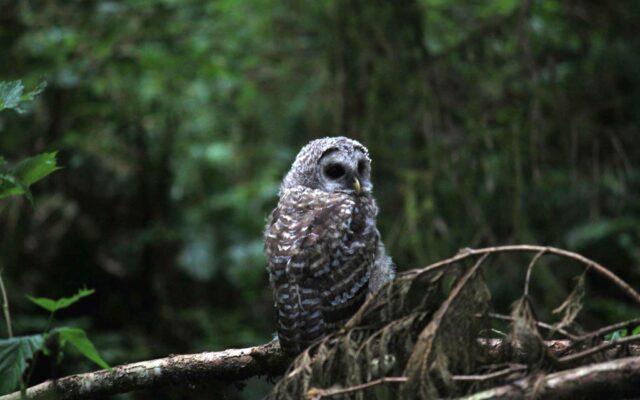Shooting tens of thousands of barred owls proposed to protect spotted owl

Federal officials have are considering options to assist the northern spotted owl by removing barred owls from the west coat by the thousands.
In a Draft Environmental Impact Statement for the Barred Owl Management Strategy, the U.S. Fish and Wildlife Service has outlined proposals that would manage the barred owl population to “address the threat of the non-native, invasive barred owl to the native northern and California spotted owls”.
According to the draft strategy, the action is “necessary to support the survival of the threatened northern spotted owl and avoid substantial impacts to the California spotted owl populations from barred owl competition”.
Officials say that while spotted owls are native to western North America, competition from the non-native invasive barred owls has been identified as a primary threat to the northern spotted owl and a significant and increasing threat to the California spotted owl.
The draft strategy also notes that additional primary threats include the loss of habitat to timber harvest on non-Federal lands and to wildfires on Federal lands.
Barred owls are native to eastern North America, but they began to expand their range around 1900 as settlement grew to the west. The larger and more aggressive owls began to quickly displace spotted owls from their historical territories.
According to data, the removal of northern spotted owls from major portions of their historical range is likely in the near future without implemented management of barred owls. In addition to the historical impacts of the owls on the local region, in recent years, barred owls have also entered into the range of the California spotted owl, although their population is noted as remaining low at this time. Despite their slow penetration, data suggests that they pose a significant threat for the future.
Agencies throughout the west coast cooperated in the proposals to bring forward six alternatives, including a no action alternative, to evaluate possible solutions as the invasive species may be very difficult to remove once established..
The proposed action involves removing nearly 70,000 of the species along the west coast over the next decades, with over 20,000 removed in the first year. This would be done by attracting the barred owls and shooting them as they respond.
Despite the lethal removal, officials state that removing this number of owls would represent approximately 13 to 17 percent of the estimated starting population of barred owls in the range of the northern spotted owl and less than one percent of the estimated global barred owl population. The proposed action would result in the removal of barred owls from up to 33 percent of the northern spotted owl range over 30 years.
According to data, there are over 100,000 barred owls within the west coast area of the strategy, with nearly 8,000 within the Olympic Peninsual and an additional 15,000 within the Western Washington Cascades.
Other alternatives involve management focused on specific areas where the native owls would be at most risk or best conditions for success. These options would greatly lessen the efforts within Western Washington.
All of the action alternatives would include lethally removing barred owls to reduce or eliminate their populations, with a focus on those who are territorial toward the other owls. While nonlethal methods were also considered, the draft indicates it would not meet the necessary goals.
The public is invited to comment on the alternatives, information, and analyses during the public review period of the Draft EIS through January 16, 2024



